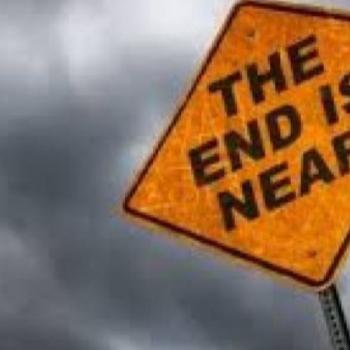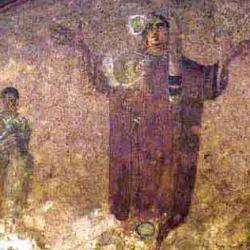As long as the apostles were alive, writes Robert Jenson, churches could check their understanding of the gospel by asking the living apostles: “Is this the gospel?” Once they died, the church needed something to mediate the apostolic witness: “her self-identity as the church of the apostles would not be an identity mediated through an acknowledged interval of past time, and she would have to live it in the way of such historical self-identity, that is, in the continuity of a recognized tradition” (Systematic Theology, 1.24).
This “early catholicism” was not unproblematic, but it was the Spirit’s gift to the church. Without this catholicism, the church would not have been able to survive the apostolic generation. If the first generation is a norm that condemns all traditioning, then Christianity cannot be passed on from generation to generation; such passage is inherently corrupt. In a footnote, he cites what he described as the “consistent” position of Franz Overbeck, who wrote, “A Christianity that has become historical is an absurd thing” (24, fn 6). For Overbeck, imminent eschatology is of the essence of the gospel, and its loss is a defection.
Importantly, though, Jenson observes that this traditioning process is not an end in itself. It is not that the institutions and traditions of the church exist “only to sustain the church’s communal identity with her past self merely as communal identity.” A community with no mission beyond its own self-perpetuation could identify itself with its tradition without remainder. But that is not the nature of the church’s tradition, which “sustains the community’s self-identity through time only in that it sustains witness to a particular event, the Resurrection” (25).
Here tradition becomes a problem to be solved rather than a solution: How does the church faithfully maintain the gospel over time? One cannot place trust in the tradition itself. None of the church’s institutions and structures – “neither Scripture nor creed nor liturgy nor teaching office, nor yet their ensemble” – guarantees the church’s faithfulness over time. We can be sure of the church’s continuity only because we are certain of God’s promise to sustain her: “Faith that the church is still the church is faith in the Spirit’s presence and rule in and by the structures of the church’s historical continuity” (25).
Jenson’s account falters at a couple of points. He gives too much credence to the notion that the church’s survival of the apostles came as a surprise. The New Testament is full of “apocalyptic” agitation, but the apocalypse on the horizon is not the end of the world but the end of the old covenant order. Jenson recognizes that there are institutional forms already in the apostolic era, but he places the process of canonization and the establishment of new offices in the post-apostolic era. But apostolic missives were already normative during the lifetimes of the apostles, and in any case the church inherited the “Scriptures” of Israel; there were never a canon-less church. (Jenson is quite aware of the role of the Old Testament in the early church; he argues that it is not strictly true to say that the church “received” the Old Testament since “the origin of the church depended on this Scriptures,” 30, fn. 23. But the reality of that prior canon needs to figure more strongly into his account of the formation of the New Testament canon.)
Making adjustments at these points wouldn’t undermine Jenson’s main thrust: Tradition is inevitable; but since the church exists not to perpetuate its tradition but to proclaim the gospel that originates her tradition, we can never trust the tradition. We must always, only trust the Spirit to sustain the church.















